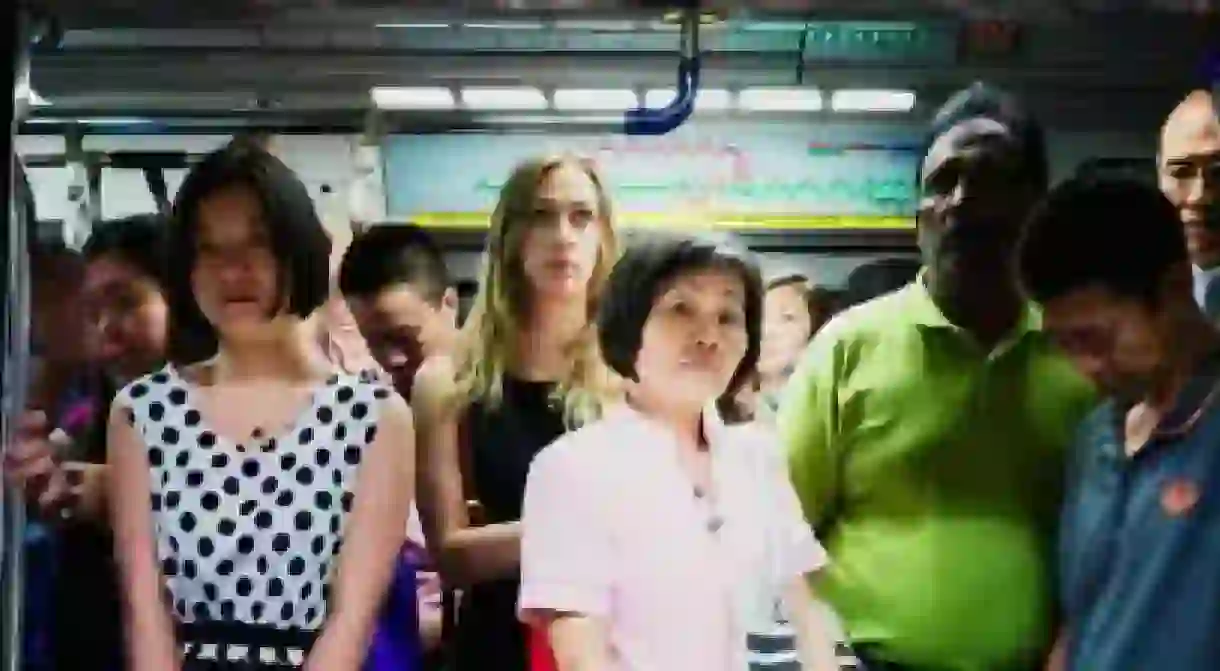Singapore in ‘Transit’ | Commuters Captured on the City’s MRT

As commuters, we create private spaces for ourselves within the most public of spaces and observe an unspoken rule not to stare at each other’s misery. Photographer Edwin Koo broke this rule, capturing individuals’ expressions as the train doors slid shut in his latest project, ‘Transit,’ which aims to ‘capture the daily theater’ of Singapore’s passengers on board the MRT.

An ‘accidental photographer’, Edwin Koo was first introduced to photojournalism at university and went on to co-author a photo book documenting the railway of Thailand as his final year project. He was inspired in 2011 when he returned to Singapore after a stint in Nepal. He felt like it was a ‘different country’ and found that the trains had become crowded and difficult to board during peak hours. Built in 1987, the MRT is used by 2.8 million people daily. Out of frustration, Koo started to photograph what he saw during the five seconds it took for the doors to slide shut. He felt angry that there was no space for him on the trains and initially took his photos as a sign of frustration. However, once he got over this frustration, he found that his work provided a unique way to capture Singapore society.


Based on Singapore’s intra-city railway system, ‘Transit’ is a study of how people feel and behave when packed into a very small space. As a photographer, Koo says he tries to ‘make a point’ to spend time with his subjects and environment, however, the nature of this project drove him to adopt a different approach. He realized that there are interesting features to observe in the frozen moments at the train doors. In the five seconds before the train doors close, Koo managed to capture the otherwise faceless crowd, revealing the commuters’ different expressions, each appearing to tell its own different story. His photos provide insight into what travelling on the MRT can be like for the thousands that have to deal with the peak hour rush.


Koo tried to get into contact with the people that he captured because he wanted to know what they were thinking and how they were feeling at the time. Koo shared his images on his Facebook page, where he encourages users to comment on his photos. This social media platform makes it feasible to connect with the commuters that he photographed. The page has received over 2,000 likes and has led to the identification of 15 people so far. One women, in particular, Teresa Lee, was identified and then subsequently invited to the book launch of Mr. Koo’s ‘Transit’ project.


The project was published in book format in April, containing 23 photos taken over a period of four months. It was published as part of a series of 20 photo books in the lead-up to the country’s SG50, which marks Singapore’s Golden Jubilee. Koo’s favorite photo is of a man holding his phone out as if taking a photo of the photographer. He says, ‘He looks like he is existing in his own lonely world, even though there are so many people around him. He is holding up the phone, which is almost iconic of how people in the MRT look now.’


Some commuters were ‘victimized’ by online trolls when the photos were uploaded to Facebook, and there were incidents involving a commuter whose photo was unnecessarily attacked online. Koo’s intention was never to intrude on the privacy of any individual, but rather to paint a collective portrait Singapore’s commuters. Other challenges included convincing personnel at the station security that his project was of an entirely innocent nature. Koo fears that he may have made some of the commuters uncomfortable, especially as he was unable to communicate the nature of the project to them.

For the most part, however, Koo is pleasantly surprised that Singapore has become a mature and tolerant society, one that can raise a mirror to itself and laugh at its own plights and shortcomings. Koo plans to continue his ‘Transit’ project, and looks forward to seeing it progress. He said that he would love to be able to look back in 2030 and see how Singaporeans used to travel in 2015. He would also like to use other forms of expression in his future work, beyond photos of closing train doors.
Edwin Koo’s photo book ‘Transit’ can be purchased here.













